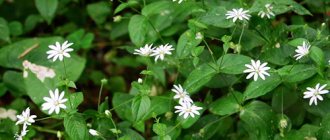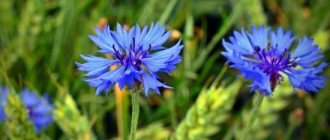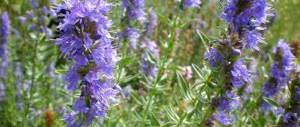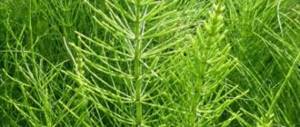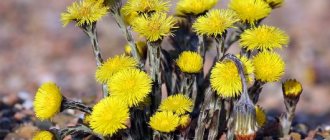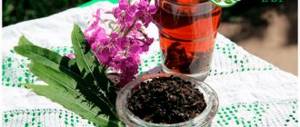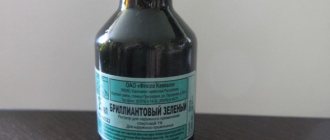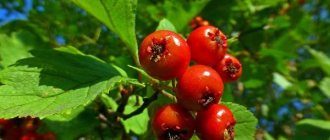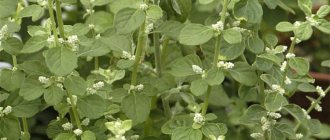Melissa is the closest relative of mint. Its main difference is the presence of a pleasant mint-lemon scent. This plant has a lot of beneficial properties, which in terms of their spectrum of action are more powerful and effective than mint.
Melissa is rich in vitamins and minerals. This plant has long been famous for its miraculous powers. It increases the body's protective functions, tones, helps in the fight against viral diseases, and is also an excellent remedy for neuroses, stress and depression. How to properly use lemon balm for medicinal and cosmetic purposes, we will consider further.
Description of the plant
It is known that any acquaintance begins with an introduction procedure. Melissa is so loved and revered by the people that people did not spare beautiful comparisons for her. Honey and bee grass, raven grass and queen plant, heartfelt joy and lady's happiness - lemon balm received all these euphonious names for its beneficial properties. This perennial herb, belonging to the Yasnotkovy family, is today widely used in a variety of fields: the pharmaceutical industry, cosmetology, traditional and folk medicine, nutrition, and veterinary medicine. But lemon balm is also one of the most valuable honey plants, so it is no coincidence that bees are mentioned in some of its names.
The plant adapts well to forests, but prefers to settle on the edges and in bushes. Basically, the habitat of the medicinal herb extends to the regions of Crimea and the Caucasus; lemon mint is also found in Kuban and Ukraine.
Since the plant is not too demanding of its living conditions, many summer residents grow it on their property, and other hobbyists grow it on their windowsill at home.
Similar crops
Often lemon balm is confused or compared with several other plants, such as lemongrass, catnip and mint, although they are not the same thing. These plants have both similarities and differences. How to distinguish lemon balm from regular mint, as well as from lemongrass and catnip?
Catnip
Like lemon balm, it belongs to the Yasnotkov family and is a perennial. Outwardly, it is slightly different from lemon balm: with pubescent and dark leaves, an erect stem, an inflorescence at the top of the bush, while lemon balm has flowers in the axils of the leaves. Both plants are grown for their stems and leaves, used as seasonings or for making tea.
Schisandra
It is a deciduous vine up to 15 meters long in the southern regions and up to four meters in the northern regions. It is used as a herbal and medicinal raw material; the fruits used are red berries, rich in sugar. Schisandra is often planted in summer cottages for decoration. The only thing it has in common with lemon balm is a pleasant lemon aroma.
Mint
The height of mint is up to one meter, the stem is branched, cross-shaped leaves are attached to it, flowers of purple shades, the shape of the flowers are spikes, emits a menthol aroma, has a tonic effect, while lemon balm has a lemon aroma and is often used to prepare soothing infusions.
Chemical composition
I would like to immediately note that lemon grass is in great demand in the pharmaceutical industry. Essential oil is especially valued, as it enriches the composition of the plant with a mass of unique chemical compounds. But, besides this important component, which is found mainly in the leaves of honey grass, there are many other useful substances:
- organic acids: caffeic, ursolic, oleanolic;
- vitamins, especially a lot of ascorbic acid;
- a complex of minerals, including: zinc, potassium, molybdenum, copper, the rare element selenium, manganese and a number of other components of this group;
- resins and tannins;
- mucus;
- fixed oils;
- bitterness;
- flavonoids;
- carotenes.
All of the listed substances in a single combination provide the beneficial and medicinal properties of lemon balm in the treatment of many pathologies, as well as preventive measures. By the way, decoctions, alcohol tinctures, and extracts are prepared based on lemon grass. Many drugs can be purchased at the pharmacy. There are also many time-tested folk recipes, based on which you can prepare a preventive or therapeutic remedy at home.
Preparation and storage of plants
To prepare medicinal mixtures and all kinds of herbal remedies used in cosmetology, the leaves of the plant and the upper part of the stem are used. Harvesting is carried out a few days before flowering or at its very beginning. The collected raw materials are kept in dark places or dried in dryers with temperatures up to 40 degrees.
It is better to collect lemon grass before noon on cloudy days, as dry lemon balm retains more essential oil. Should be stored in tightly closed containers. Properly harvested herbs retain their medicinal properties for up to 2 years.
Beneficial properties of lemon balm
It is easy to identify lemon balm by its characteristic lemon smell. This refreshing aroma is especially strongly felt when rubbing the herb with your hands. But the outstanding qualities of the plant are not limited to this sign, because lemon balm, in addition to its pleasant smell, has a lot of medicinal properties:
- anti-inflammatory;
- antibacterial;
- sedative;
- antioxidant;
- diuretic;
- hypotensive;
- antiseptic;
- antipyretic;
- choleretic;
- antispasmodic;
- astringent;
- restorative;
- expectorant;
- laxative;
- painkiller;
- hypoglycemic;
- antiemetic.
It is worth adding to this list that with regular use, for example, healing teas with lemon balm, brain activity is activated and memory improves.
The high content of ascorbic acid in honey herb helps strengthen the immune system.
Use in cooking
Tender leaves and shoots of lemon balm, cut before flowering, are used fresh or dry to add a fresh lemon aroma to European dishes.
How to use lemon balm:
- added to salads and soups, game, fish and mushrooms;
- served with grated cheese;
- used for canning vegetables;
- decorate confectionery products;
- flavor teas, liqueurs, cocktails, smoothies.
If you want the plant to impart flavor to the dish, do not boil it.
For what disorders is lemon balm useful?
Considering the fact that lemon balm has a rich chemical composition, its use in modern medical practice is widespread in various fields of medicine. Let us list the main areas where medicinal vegetation is most in demand.
- Neurology. Melissa has long established itself as an effective sedative. Doctors recommend taking decoctions and infusions based on it for neuroses, systemic pathologies of the central nervous system, convulsive manifestations, and chronic fatigue. The herbal preparation is excellent for migraines, persistent insomnia and dizziness.
- Cardiology. Lemon balm has a beneficial effect on the state of the cardiac system. By taking home remedies with medicinal herbs, you can relieve attacks of tachycardia and shortness of breath and normalize your heart rate.
- Gastroenterology. The ability of honey herb to stimulate appetite has a positive effect on digestion and intestinal function, and its antiemetic effect is useful for toxicosis in pregnant women. In addition, lemon balm has a pronounced laxative property, which will help with constipation. Usually in such situations, doctors recommend that patients do microenemas with a decoction of the plant. For liver diseases, lemon balm as part of folk remedies will help to establish a normal outflow of bile.
- For vascular diseases. Melissa strengthens the walls of the vascular bed, preventing cholesterol from forming so-called “plaques”. Pronounced antispasmodic properties ensure dilation of blood vessels, which helps reduce blood pressure during hypertension.
- Joint problems. For inflammatory processes affecting connective tissues, home remedies with lemon grass help relieve unpleasant symptoms and restore normal mobility of the affected joint. It is also useful to take such drugs for neuralgia.
- Skin pathologies. Melissa is widely used in dermatology. The ability of the herb to relieve inflammation and swelling is used for furunculosis, skin rashes, ulcers and acne. External application of compresses and lotions with herbal decoction is used for joint bruises and insect bites. When treating dermatological diseases, doctors often recommend taking home remedies orally or taking medicinal baths with lemon balm.
- In dental practice, healing solutions with lemon balm are used for rinsing for gingivitis and toothache.
Melissa preparations in the pharmacy
In pharmacies you can buy:
- Medicinal lemon balm herb. Used for increased excitability of the nervous system, improves sleep quality;
- Essential oil. It is used for massage, for treating skin lesions, for preparing face masks and homemade creams. Prescribed internally for neuroses, depression, anemia;
- Melissa tincture. Prescribed to patients with neuroses, flatulence, dermatitis, dysbacteriosis, and pathology of the digestive system. The tincture can also be used as an immunostimulating agent.
Lemon balm is included in the formula of sedatives, the most famous of which are Persen and Novo-Passit.
What are the benefits for the female body?
For representatives of the fair half of humanity, honey herb is extremely useful at any age. During pregnancy, moderate consumption of soothing tea will relieve anxiety and nausea in cases of severe toxicosis. Home remedies will promote normal sleep, which is very important for the expectant mother.
After the birth of a baby, the main task of every mother is to feed the baby. Since lemon balm has the ability to stimulate lactation, it will be very useful during this important period of life.
Lemon balm goes well with anise, oregano, and sage. From these medicinal herbs, nursing mothers can prepare tea compositions or water decoctions.
Melissa is no less useful for women of mature age, when the first signs of menopause increasingly remind us of the impending menopause. During this period, it is necessary to relieve irritability and emotional stress. If you drink soothing tea with lemon balm or a herbal decoction every day, you can quickly normalize and even improve your condition.
Growing conditions
It is best to grow grass in well-lit, elevated areas away from cold winds. Lemon grass loves loose, sandy and loamy soils. Gardeners do not recommend using clay and acidified soil for planting seeds.
Reproduction of lemon balm is possible:
- Seeds. They are sown in loosened soil to a depth of no more than 0.3 meters. After emergence, the sprouts are thinned out so that the distance between individual bushes is about 30 cm, and between rows up to 60 cm;
- Dividing bushes. For propagation, take bushes 2-3 years old. It is better to do the transplant at the beginning of summer, so the plant can take root well before the cold weather.
A bee can grow in one place for up to 10 years. However, after 5-6 years it is recommended to change the area for the plant. Melissa crops must be thoroughly cleared of weeds, and the soil around the bushes must be periodically loosened.
Increased watering is not required - lemon balm tolerates slight drought more easily than high humidity. During the period of vegetative growth, organic fertilizers containing potassium phosphorus must be added to the soil.
Melissa can be grown in an apartment all year round. In summer, it is better to keep pots with plants on the loggia, and when cold weather arrives, move them indoors. The diameter of the flowerpot for a lemon grass bush should be from 0.2 m. In the cold months of the year, lemon balm is watered once every 3 days, in the hot season every day.
Benefits for men's health
Although lemon balm is considered a feminine herb, men should not avoid using it. The distrust of the stronger sex towards this type of vegetation is caused by the fact that, according to some experts, lemon balm is not desirable for men and is even harmful, since it reduces potency. True, this information has no scientific basis. The instructions for medications with lemon balm also do not mention gender differences in indications for use. Therefore, for sleep disorders, digestive disorders and other conditions mentioned above, men will also benefit from taking home remedies with lemon balm in moderation.
Description of the herb lemon balm
Description of lemon balm (Melissa officinalis L.): belongs to the Lamiaceae family, is a perennial herbaceous plant up to 30-120 cm high. The rhizome is highly branched.
The stem is tetrahedral, branched at the apex, pubescent with short hairs admixed with glands or almost bare.
The leaves are opposite, petiolate, ovate to rounded-rhombic or oval, crenate-serrate, pubescent.
As you can see in the photo, the flowers of lemon balm are small, collected in false rings, forming spike-shaped inflorescences:
The calyx has lower, subulate-shaped teeth, long-haired and glandular. The corolla is pinkish-lilac, bluish-white or lavender in color. The fruit is large, consists of 4 ovoid nuts, black, shiny.
Blooms in June-August.
The fruits ripen in August-September.
The first description of lemon balm appeared in Theophrastus, who classified this plant as a wild small shrub without thorns.
Special features: the whole plant has a strong pleasant mint-lemon smell and a bitter-spicy taste.
Distribution: found in the wild only in the southern regions of our country. Widely cultivated in gardens and orchards as a spicy and medicinal plant. Does not tolerate frost well and needs shelter for the winter.
Cultivation: The medicinal plant lemon balm needs warmth and moist, humus-rich soil. It is useful to fertilize 1-2 times during the summer with mineral fertilizers. Gives abundant self-seeding and grows quickly. In favorable conditions, young plants form a continuous carpet around the main bush. Young tips of branches can be rooted if necessary.
Is it possible to give lemon balm to children?
Lemon balm is so beneficial that pediatricians allow infants to drink the healing tea. It is clear that in such situations the concentration of the herbal component should be minimal. Melissa is often included in herbal teas to relieve spasms and calm the child. Usually, after a small portion of a healthy drink, children fall asleep well.
A decoction of bee grass helps with bloating, colic, and digestive disorders. Pediatricians often recommend that parents of hyperactive children give them a light decoction of lemon balm. But only a doctor can prescribe home remedies with medicinal herbs to children of any age. It is not worthwhile to independently treat and prevent children, since any herbal preparation can cause an allergic reaction.
Popular types and varieties: name, description and photo
Medicinal - lemon
A perennial plant, it is a branched bush, 45 cm wide and 125 cm high. The flowers are small, white, pink or yellow. The tops of shoots and leaves contain the highest concentration of essential oils. The heart-shaped leaves can be collected the next year after planting the plant in a permanent place.
Tsaritsynskaya semko
A perennial plant, 80 cm high, blooms in mid-July. Melissa can grow in one place for up to ten years. Before and after this period, you need to cut the leaves twice, which have a pointed shape and a dark green tint. The side shoots of the plant are creeping.
Quadrille
Pointed green leaves with denticles along the edges densely cover a bush 80 cm high. Cutting is carried out the next year after planting, before or after flowering. The plant has a very pronounced lemon smell, and the leaves have a bitter taste.
Dozya
A perennial that can grow in the same place for up to five years. The height of the bush reaches 90 cm. In the second year of cultivation, the active growing season is one and a half months. The leaves are dark green in color, slightly raised, with shallow grooves and teeth along the edges. The flowers are white, small. It has a pronounced, not sharp lemon aroma.
Lada
A plant with a semi-erect stem and medium-length, wide leaf blades. The variety is short - approximately 52-54 cm, blooms with small white flowers.
Isidora
The height of the plant is about 80 cm. The leaves are green with a light green tint and have an oval shape and serrated edges. The peculiarity of the variety is its rapid growth. The leaves are suitable for consumption in the second year after planting.
Pearl
A shrub 70 cm high with oval leaves edged with teeth. A perennial that grows productively in one place for up to five years. The greens are suitable for consumption in the second year of planting. At least two cuts must be made per season.
The variety is high-yielding - about 5 kg of raw materials can be collected per square meter. The plant has a bright mint aroma with a lemon note and a tart taste with a slight bitterness.
Golden
It differs from other varieties in the non-standard color of the foliage - it is dark green with a golden pattern. The leaves are small and toothed. The plant is perennial and needs to be replanted to a new location every five years.
Pure gold
The variety is artificially bred. Compact shrub with oval leaves of a golden hue. The length and width of the plant are the same - about half a meter. The flowers are initially white and become pale lilac by mid-flowering.
Melissa is often confused with mint, catnip and Moldavian snakehead. Melissa has a similar smell to catnip, and the aroma of snakehead can be distinguished from lemon balm only by its intensity. The annual “Turkish lemon balm”, also called snakehead, has a sharper and richer citrus smell.
Contraindications
Although from all of the above it follows that lemon balm herb has medicinal properties, and there are also contraindications to the use of this plant. You should not use the mother liquor under the following conditions:
- tendency to allergic manifestations;
- epilepsy;
- individual intolerance to the plant;
- persistent hypotension (low blood pressure).
People who drive vehicles should be extremely careful when using products that contain lemon balm. The same restrictions apply to those persons whose professional activities involve complex mechanisms.
Interesting Facts
- Melissa began to be cultivated on a large scale after Charlemagne issued an order to grow the plant in the territories of monasteries;
- Bee essential oil was first produced in 1582 in Germany;
- In the old days, lemon balm was included in drugs used for pain relief during childbirth;
- There is a legend that tells that the nymph Melissa, famous for her beauty, was supposed to become the beloved of the gods. The goddesses did not like this, and they turned her into a bee. This is where the origin of the plant's designation comes from - Melissa is translated from Greek as bee.
Home Recipes
Knowing how lemon balm is beneficial for the body, any person who cares about their own health will be able to prepare an effective preventive or therapeutic remedy. Do-it-yourself preparations are suitable for this purpose, but you can purchase dry extract or essential oil of lemon balm at the pharmacy. Many sedative pharmaceutical drugs contain lemon balm. Therefore, there are no problems with purchasing an effective product today. But as an example, I would like to cite several folk recipes that are especially popular among the population.
Healing tea
This is an ideal stress reliever. This drink can be drunk regularly by people who are under constant nervous tension. Tea is prepared from 3 liters. tea of dry plant concentrate and a glass of boiling water. After brewing the herbal mixture, close the cup with a lid and let the drink brew for a quarter of an hour.
Drinking warm lemon balm tea will be more effective if you add a little honey to the drink.
Decoction
This product can be used as a solution for procedures such as lotions or healing baths. But you can take small doses (½ cup) twice a day before meals. The decoction is prepared according to the following scheme:
- Pour a tablespoon of fresh or dried raw materials into a glass of boiling water.
- The solution should boil for one minute, and then it must be removed from the heat.
- After infusion for forty minutes, the broth can be strained and then taken in the dosage indicated in the recipe.
Methods and amounts of lemon balm use
- Melissa infusion. Take 10 g of dry crushed lemon balm herb, add 1 glass of boiling water, leave for 1 hour. Strain the infusion and take it 3 times a day, half a glass, 20 minutes before meals.
- Melissa tea. Prepare 1 lemon, rinse thoroughly and pour boiling water over it. Next, cut into small pieces and place in a saucepan. Add 2 liters of water and bring to a boil. When the water boils, you can add lemon balm for a pleasant aroma and bring to a boil again. Then leave for a while to let the tea steep. You can drink 1 glass before or after meals.
- Grapefruit salad with lemon balm. Remove the zest from half of 1 grapefruit, mix with 2 tsp. vegetable oil, leave for 10 minutes. Cut off the peel of 2 more grapefruits along with the white film. Take half a red chili pepper, remove seeds and membranes, cut into half rings. Don't forget to remove the stems from the lemon balm and chop the leaves of the plant into fairly large pieces. Mix grapefruit with lemon balm and chili, season with oil and zest. You will get a delicious dietary salad.

